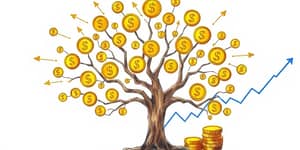
In an era where industries rise and fall on the back of innovation, regulation, and economic shifts, investors seek tools that allow them to capitalize on emerging market dynamics. Sector ETFs have emerged as a powerful vehicle, offering concentrated access to specific industry segments without the complexity of picking individual stocks. By understanding their mechanics, advantages, and strategic uses, you can harness sector ETFs to ride long-term trends and manage portfolio risk.
Sector ETFs are exchange-traded funds that track indexes composed of companies within a single industry or sector, such as technology, healthcare, or energy. Unlike diversified broad-market funds, these vehicles deliver focused exposure to particular industries, enabling tailored participation in areas poised for growth or serving defensive roles during downturns. They trade on major exchanges with intraday pricing, offering flexibility similar to individual equities.
By pooling assets into an easily tradable wrapper, sector ETFs free investors from hand-selecting stocks and managing concentrated positions. Transparency is high: holdings are disclosed daily, and expense ratios often fall below those of actively managed mutual funds. For both tactical and strategic allocations, sector ETFs serve as versatile building blocks.
Investors leverage sector ETFs to refine portfolio exposure. Key benefits include:
These strengths position sector ETFs as a resourceful tool for tactical allocation, whether rotating assets in sync with economic cycles or capturing secular trends driving tomorrow’s markets.
While sector ETFs offer potent upside, concentrated bets carry inherent risks. Overexposure to one industry amplifies volatility and subjectivity to sector-specific headwinds. Before allocation, weigh these factors:
An informed approach balances opportunity with prudence, incorporating defensive sectors when needed and avoiding emotional overreactions during sharp downturns.
Examining recent returns provides perspective on how sectors have trended. As of June 2025, the S&P 500 sectors exhibited disparate 12-month performances:
The table underscores the power of selective exposure: financials and consumer discretionary outpaced the broad market, while energy and materials lagged. Niche thematic ETFs, such as those focusing on gold miners or defense technology, delivered even stronger results, with year-to-date gains exceeding 40% in some cases.
Effective deployment of sector ETFs hinges on clear objectives and market awareness. Consider these approaches:
By adapting allocations to evolving conditions, investors can enhance risk-adjusted returns and avoid procyclical absorption of losses during market stress.
With hundreds of sector ETFs available, selection should focus on liquidity, cost, and index methodology. Look for funds with:
• Low expense ratios—often between 0.10% and 0.50% annually for large passive offerings.
• Sufficient trading volume to ensure tight bid-ask spreads.
• Transparent, rules-based index tracking to avoid unintended concentration biases.
Popular tickers include XLK (Technology), XLF (Financials), XLV (Healthcare), XLE (Energy), and thematic options like ARKQ (Robotics & Automation) and LIT (Battery Technology). European counterparts, such as IUIT.DE and DEF3.DE, offer regional diversification.
To maximize the impact of sector ETFs in your portfolio, begin with a clear plan: define your time horizon, risk tolerance, and return objectives. Use regular portfolio rebalancing and review to maintain alignment with your strategy and to lock in gains or cut losses.
Apply risk controls such as stop-loss orders or position limits to prevent outsized exposures. Stay informed on macroeconomic data—interest rates, inflation, and consumer sentiment—to anticipate sector rotations. Complement sector positions with broad market ETFs for baseline diversification.
Finally, adopt a disciplined mindset: avoid chasing short-lived rallies, and resist the urge to abandon well-researched positions on minor pullbacks. Over time, a structured approach to sector ETF allocation can unlock new avenues for growth and resilience in any market environment.
References













